 |
|
| 35 OVER YEARS INDUSTRY EXPERIENCE | |
Whatever your industry or heat processes, Zircon-Rich Novit can help you save energy and reduce costs.
 |
Refractory coatings designed to protect the bricks, steel, monolithics, castables, refractory and steel shells in furnaces, kilns, boilers and various high temperature vessels.
Characterized by a very high content of Zirconia (as 62.9 % Zr02) which imparts extremely high resistance to the aggressive attacking environments typically encountered at temperatures up to 1,900'C.
FURNASCOTE NOVIT has better adhesion than most conventional Zirconia based refractories.
FURNASCOTE NOVIT is used regularly in the following industries and processes:












INCINERATOR / CREMATORIUM
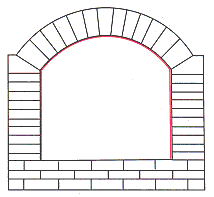
The usual problems encountered are those of thermal shock and slag formation.
A coating of Nonvit at 2 to 3 mm minimises the life of the refreactory lining.
ALUMINIUM MELTING / HOLDING FURNANCE (1)
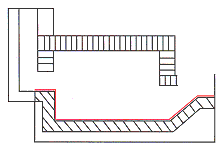
The refractory lining is typically a high alumina castable which is subject to
the destructive effects of high temperature and molten aluminium. The frequency
of repairs is reduced by a lining of 3 to 6 mm Nonvit.
ALUMIMINIUM MELTING FURNANCE (2)

3 mm of Nonvit will seal the refractory against the leaching effects of moletn
aluminium. 6mm is used to line the connencting channel.
GLASS
MELTING FURNACE
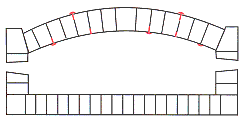
Nonvit is used for patching cracks, crevics and joints on the crown. It may be
applied by trowelling, ramming, tamping, pouring or caulking.
NOSE ARCH
IN FIELD ERECTED WATER TUBE BOILERS
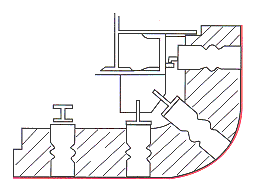
This part of the boiler is subjected to both hugh tempretures and slag
attack from the products of combustion. A coating of 2 to 3 mm of Nonvit on the
refractory sirface will minimis the effects of spalling, slagging and abrasion.
SUSPENDED MONOLITHIC ROOF OF FIELD ERECTED BOILER USING BOTH OIL AND SOLID
FUEL
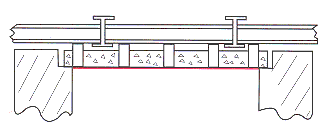
A coating of 2 to 3 mm Furnascote Nonvit applied to the refractory
surface increases it resistance to the destructive effects of spalling, slagging,
chemical attack and erosion.
INDUCTION FURNANCE
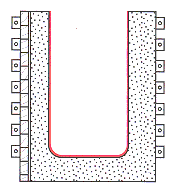
The rammed lining is subjected to chemical attack by molten metal
and to cracking and spalling from thermal shock, 1 - 3 mm of Furnascote Nonvit
will reduce these effects, extend the life of the furnace and improve the quality
of the processed metal.
REHEATING FURNANCE
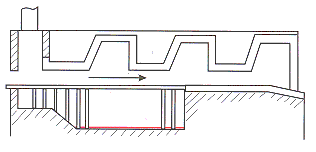
A thin coat of 1 to 2 mm Nonvit reduces the adhesion of slags to
the floor. The Nonvit makes it easier to remove slag when cleaning.
RECEIVERS
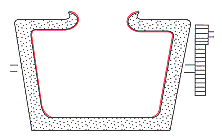
A coating of 2 to 3 mm Furnascote Nonvit on the walls and lips of
receivers will prolong the life of the lining.
SMALL LADLES
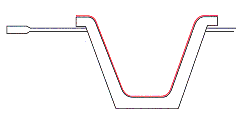
Hand ladles lined with mouldable refractory can be coated with 2
to 3 mm Nonvit to increase the number of heats and increase production life.
CRUCIBLE FURNANCE
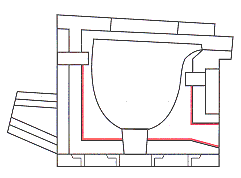
Frequent repairs are necessary due to the damaging effects of high
temperature and thermal shock. These conditions cause cracking of the refractory
lining and heat losses. Nonvit coated at 2 to 3 ,, will eliminate or minimise
the problem.
TUNNEL KILNS
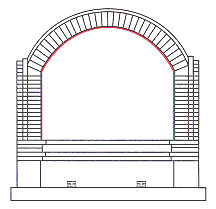
Thermal shock and slag formation are common problems with high refractory
wear around burner ports. Salt glazes are corrosive to conventional refractories.
A coating of Furnascote Nonvit at 2 to 3 mm mininises the destructive effects
of combustion, glazing and thermal shock. Slag removal is easier and reject rates
reduced.
TUNDISH IN CONTINUOUS CASTING
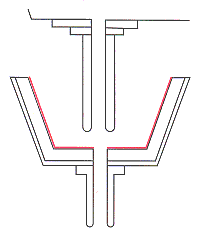
Frequent repairs and shutdowns are encountered due to the effects
of high temperature and thermal shock. A thin coat of 2 to 3 mm Nonvit prolongs
the life of the refractory lining.
SOAKING PITS
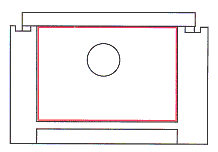
High temperature and thermal shock lead to spalling of the refractory
lining. These effects and hence the cost of maintenance can be reduced by application
of 2 to 3 mm Nonvit.
ELECTRIC ARC FURNACE
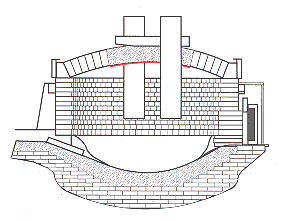
The centre section of the roof is made of either castable or plastic
refractory. A coating of 2 to 3 mm of Nonvit will minimise the destructive effect
of high temperature and thermal shock, prolonging the life of the refractory.
BAFFLES IN WATER TUBE BOILERS
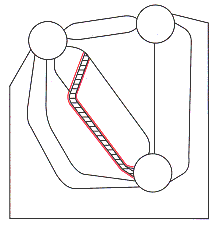
A thin coat of 1 to 2 mm of Nonvit on the baffles prevents or minimises
the effects of spalling, reduces the adhesion of slag and ensures a gas tight
surface.
WATERTUBE OIL FIRED POWER BOILER
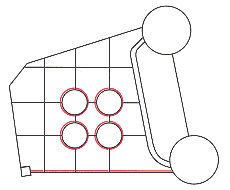
The burner throat is subjected to intense wear and tear due to the
effects of high temperature, slagging, chemical attack, erosion and thermal shock.
A coating of 2 to 3 mm of Nonvit resists these combined effects on the refractory
lining. A coating of 1 to 2 mm on the walls and floors minimises the adhesion
of slags and helps in prolonging the life of the refractory life.
FIRETUBE PACKAGE TYPE BOILERS FOR PROCESSING
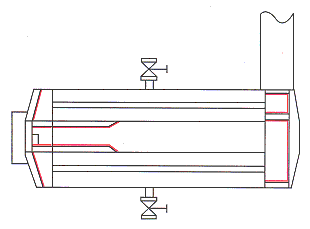
High temperature, thermal shock, slags, chemical attack and erosion
have a devastating effect on the parts exposed to heat, particularly the burner
throat. A 2 to 3 mm coating of Furnascote Nonvit on the burner throat and a 1
to 2 mm coating the rear and front baffles will extend the life of the refractory
lining.
SPECS / DATA SHEET
"Furnascote" is the-collective name for a series of refractory coatings designed to protect the bricks, monolithics, castables and steel shells in furnaces, boilers and various high temperature vessels.
Furnascote refractories are characterised by a very high content of zirconia (as 62.9% ZrO2) which imparts extremely high resistance to the aggressive environments typically encountered at temperatures up to 1900°C. Furnascote has better adhesion than most conventional zirconia based refractories.
THE TWO MAIN FURNASCOTE TYPES
NONVIT
Finish: Matt, buff coloured,
non-vitreous.
Temperature Range: Up to 1,910°C
HIGLAZE
Finish:Vitreous,
highly glazed.
Temperature Range: 850 -1,250"C
NONVIT is the versatile, general purpose product. HIGLAZE is used as a slag resistant finish to~ONVIT in annealing furnaces, spouts and funnels. '
A 3mm protective layer of Furnascote can typically increase the working life of any underlying refractory by a factor of two to four times.
Furnascote is supplied in the form of a powder which is mixed with cold water to the consistency of a paste, cement or slurry prior to application by trowel, brush or spray.
MAIN USES FOR FURNASCOTE
.
To reduce the effects of thermal shock.
. To protect refractories against the
aggressive effects of burning fuel oil, gas and solid fuels.
. To produce a
gas tight surface and minimise energy losses.
. To reduce spalling.
. To
eliminate cracking.
. To reduce slag adhesion.
. Generally, to increase
the working life of furnaces and reduce the costs of maintenance shut downs.
FURNASCOTE is used regularly in the following industries and processes:
Preparation:
FURNASCOTE should only be applied
to sound, clean surfaces. Old refractory surfaces must be thoroughly cleaned with
a scraper or wire brush removing all loose pieces. Any glassy surfaces should
be roughened with an abrasive disc. Cracks and holes should be cleaned out and
then filled with a paste of NONVIT.
Mixing:
Mix FURNASCOTE with
water to a smooth, creamy paste by adding 1 litre of water to 10kg powder. Adjust
the consistency of the "mix to suit brushing or trowelling as required. Use
less water for a repair mortar or plugging mix. For spray application, add more
water to form a slurry and apply using cement spraying equipment. Allow to stand
after mixing for approximately 1 hour minimum then re-mix briefly (preferably
3 to 4 hours).
Application:
Using a brush, trowel or spray, coat
the furnace walls, hearth, ceiling, bridges etc. to a thickness of approximately
3mm. After an hour, further coats of NONVIT or HIGLAZE may be applied as required.
Drying:
Allow
to dry out thoroughly. Thin coatings (1-2mm) for a few hours; 24-72 hours for
thicker coats. 7 days should be allowed when NONVIT has been used as the mortar
for building with new refractory bricks.
Firing:
Raise firing
temperature as slowly and evenly as possible, typically at 2SOC per hour, until
125°C is reached. Thereafter, for NONVIT, the furnace may be heated to its
working temperature as usual. For HIGLAZE the first firing must attain at least
1200°C, thereafter, any temperature up to 1650°C can be used.
Coverage:
Approximately 3kg per square metre at 1mm thickness.
General Properties:
FURNASCOTES
are odourless, tasteless and non-toxic.
Form: Dry powder, density = 3.32,
Bulk factor = 2.12.
Packed: 25Kg plastic drums. Chemical Resistance: After
firing, FURNASCOTES are unaffected by most acids and alkalis in liquid or gaseous
form, NONVIT being particularly resistant to vanadium pentoxide. A 3mm coating
is gas tight at normal pressures.
Physical Properties:
FURNASCOTES
become slightly elastic above 200°C thus providing outstanding resistance
to thermal shock. Thermal expansion is approximately 1 % over the range 0°C-1910°C.
Shrinkage
is less than 0.25%.
Emissivity Value = 0.58
K Value = 3.5 at 500°C.
Resistance
to powdering is excellent.
Chemical Analysis of NONVIT:
(mainly
as oxides) - %
Zirconium 62.97
Aluminium 1.63
Calcium 1.37
Magnesium
0.34
Silicon 32.06
Titanium 0.25
Boron 1.10
Fluorine 0.25 (as fluoride)
HEALTH
and SAFETY:
Avoid inhalation of dust. Wear dust mask, gloves and goggles
whilst mixing and applying FURNASCOTE.